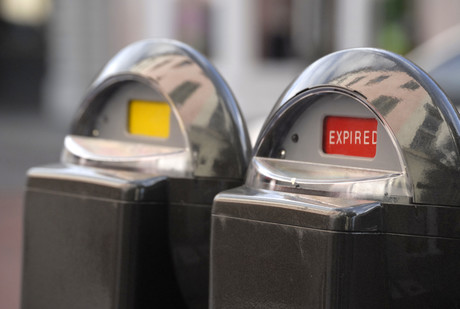Expired — the 2G turn-off dilemma

The 2G switch-off will affect more than just mobile phones — other equipment will need to be urgently upgraded.
As of 1 December, Telstra will have shut down its 2G network and Optus will be following close on its heels, shutting down its 2G network in April. According to Telsyte, this will affect between 500,000 and 700,000 phones currently in use, effectively rendering them redundant. But, the ramifications of the 2G switch-off reach far beyond mobile phones.
2G, which has been around since 1991, was the first GSM mobile telecommunications network. At the time, it brought about a number of innovations due to the fact it enabled data services. From SMS text messages to picture messages to mobile web browsing, 2G revolutionised the mobile world.
But mobile comms are just the tip of the iceberg. The 2G network has also been used for many other applications, such as vending machines, ATMs, tracking devices and parking meters. With all of these needing to be updated, businesses and councils are up for many thousands or even millions of dollars in costs.
One of the most common devices still using the 2G network is the parking meter. 2G was introduced into parking meters in order to support credit card payments and provide additional convenience for motorists and parking managers. From there, the technology continued to evolve, from maintenance and enforcement notifications, to inventory management and pay-by-SMS.
The 2G network changed the parking meter game and provided perhaps one of the clearest earliest examples of M2M in action. Although 3G and 4G technology has since replaced the 2G network, there are still thousands of legacy machines lining our streets.
So, what will happen when the 2G network gets switched off? Will these machines still function? The answer, unsurprisingly, is no. Without the ability to communicate, credit card payments will not be taken, the machines will need to be checked regularly to ascertain when they need to be emptied and any additional functionality, such SMS payments, will not work. There’s not an easy fix either. Councils and parking operators will have a decision to make as to whether to upgrade the modems to 3G/4G, replace the meters or implement entirely new technology.
Upgrading to 3G or 4G
There are two options when upgrading legacy 2G meters — either upgrade the modem or completely replace the machine.
While upgrading the modem may seem like a simple fix, there are some complications that come with it. One such complication is power. The modem within parking meters is powered by batteries, which are carefully managed to ensure the machine uses minimal power and the batteries never go flat. Upgrading the modem could likely mean upgrading the batteries to support the power-hungry 3G and 4G hardware.
Completely replacing the machine also sounds like a simple idea. As they say, out with the old and in with the new. But new for how long? Parking machines have an average lifespan of 5 to 10 years. Can we say the 3G or even 4G networks will be available for that long? The pace of technological change is hitting unprecedented levels and it wouldn’t be surprising if we see these newer networks replaced before parking meters need upgrading again.
As such, completely replacing these machines is an expensive, short-term solution. Additionally, new machines barely add any further functionality to the user. They are still the same old, hard-wired, static machines, which haven’t really changed since the 1950s.
Into the 21st century
With the proliferation of smartphones and greater understanding of Internet of Things (IoT) technologies, new smart parking solutions are coming to the fore. One of the biggest shake-ups is that, in fact, we no longer need parking meters.
In Australia, smartphone penetration reached over 89% in 2016. There is no reason we cannot make use of the fact nearly all Australians have a powerful and connected computer in their pocket. In addition, the cloud has enabled businesses and councils to host parking information in a virtual environment, enabling machines to communicate with many different devices, systems and applications.
This has given rise to smart mobile parking technologies, such as CellOPark. These systems utilise the most recent mobile telecommunications network (4G/LTE) to manage, validate and enforce parking, as well as link up with other contemporary systems.

These smart mobile parking platforms not only futureproof but are also significantly more cost-effective. As they are entirely software based, there is no need for hardware or machinery. This removes the need for maintenance or physical upgrades of machines. It also means motorists no longer have to find a meter. They can pay for their parking through their smartphone, starting and stopping the session for the exact amount of time they’ve parked.
It’s time local governments started to look towards such contemporary technology to futureproof parking systems. Typical local government procurement processes for parking technology see equipment replaced at a frequency of between 5 and 10 years. Compare this with the average smartphone tenure of only two years, and there is a compelling argument to start scaling back the deployment of expensive roadside strong boxes and let motorists enjoy the convenience of paying for parking using their smartphones.
The 2G switch-off shouldn’t be seen as an inconvenience for local governments and councils. Instead, it should be seen as an opportunity to bring parking into the 21st century, using the new technologies, networks and software available today.
Customised rugged tech shaping the next era of defence comms
Rugged computing platforms are becoming central to how armed forces protect communication...
A guide to aquatic survival this summer
While most Australians are planning aquatic adventures this summer, less than a third are...
Maher Terminals enhancing operations with private wireless
Maher Terminals chose the Nokia Edge platform because it needed a secure, reliable,...




